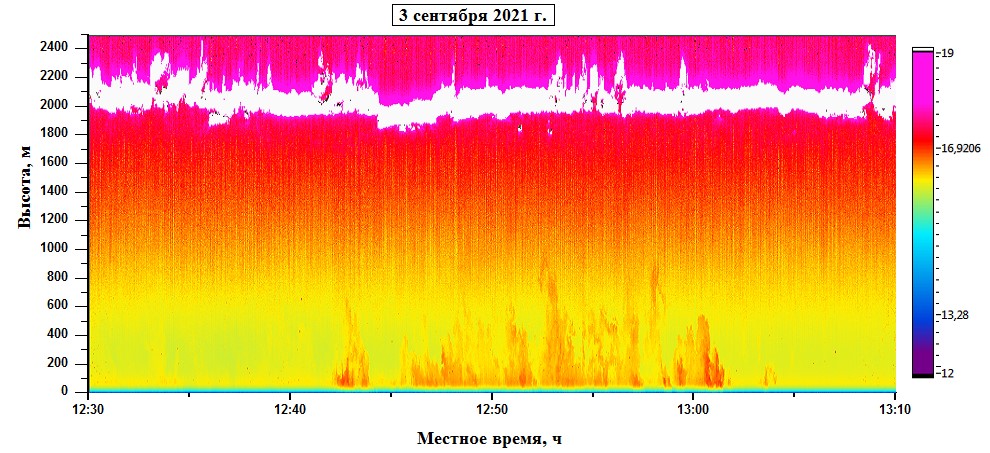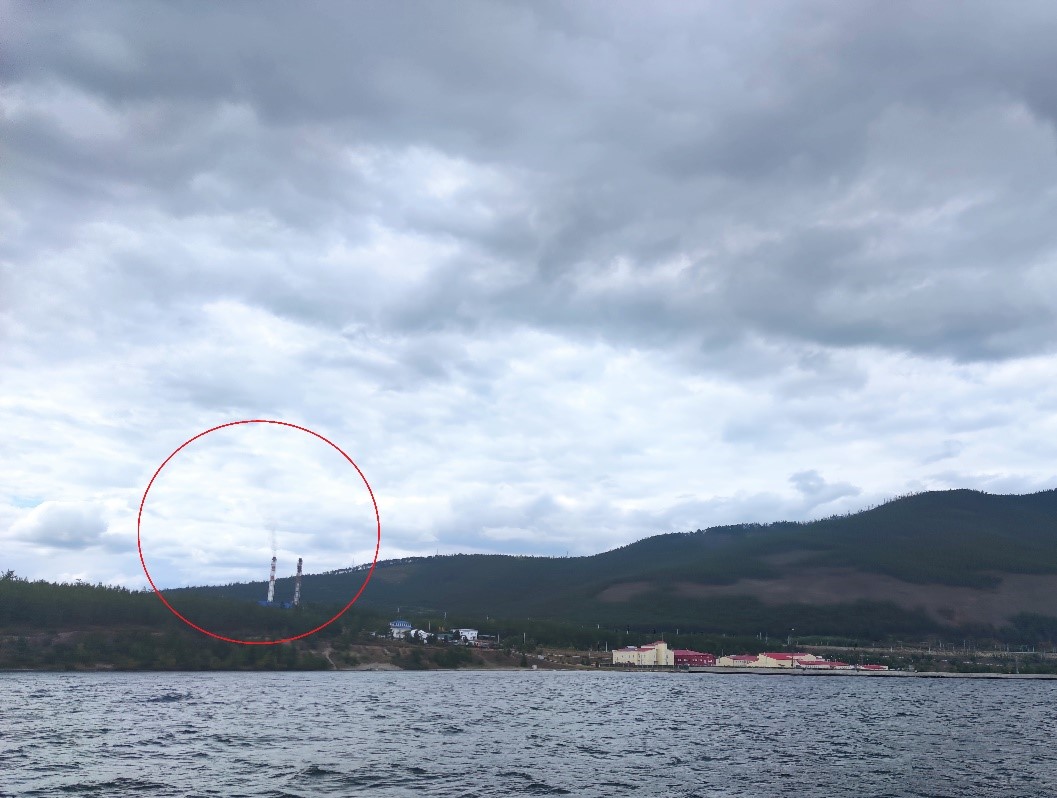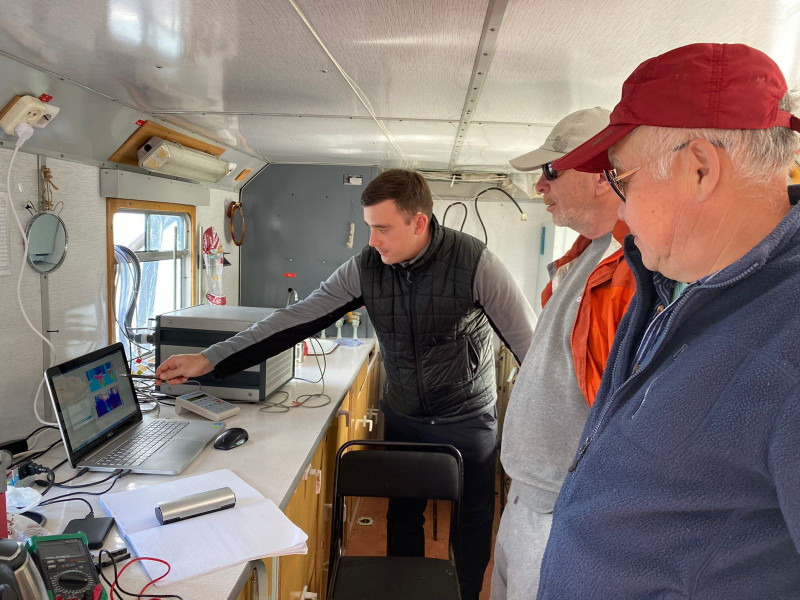Expedition on board the RV “Akademik V.A. Koptyug” from 1 to 9 September 2021
The expedition within the framework of the Russian Science Foundation grant was carried out on board the RV “Akademik V.A. Koptyug” from 1 to 9 September 2021 to study physicochemical parameters of the near-water atmosphere above the water area of Lake Baikal.
The main aim of the expedition was to conduct experimental observations of the content of aerosol and gaseous pollutants and meteorological characteristics of the atmosphere above the water area of Lake Baikal using various equipment in the continuous monitoring mode as well as to estimate the contribution from various sources to the concentration of pollutants in the atmosphere above the lake in autumn.
The equipment was installed on the upper deck of the RV where continuous measurements of meteorological parameters were carried out with a WH-2310 professional weather station. The concentrations and particle size spectrum for atmospheric aerosol from 5 nm to 10 μm with particle concentrations from 1 to 105 cm-3 were determined using a diffusion aerosol spectrometer (DAS 2702M) and a Handheld 3016 particle counter. Spatiotemporal distribution and variations of gaseous pollutants (ozone, sulfur oxides and nitrogen oxides) were analysed with chemiluminescent gas analysers from Optek. A high volume sampler from General Metal Works and aspirators were used for sampling of aerosol for the analysis of the chemical composition: ions, trace elements, PAHs and soot.
A Loza-A2 lidar was installed on the lower deck to record the optical depth of the atmosphere. In this cruise, for the first time, atmospheric sounding was carried out up to the altitudes of 20 to 25 km.
All atmospheric parameters were measured continuously along the route of the vessel as well as during moorings and near the local sources of air pollution in the central ecological zone: the towns of Baikalsk, Slyudyanka and Severobaikalsk, the Listvyanka, Ust-Barguzin, Nizhneangarsk, and Kultuk settlements. Measurements were also carried out near large bays and firths at the estuarine areas of the main tributaries of the lake: the Selenga, Barguzin and Upper Angara rivers, as well as in the Angara source, where polluted air masses are removed from the industrial complexes in Buryatia and the Irkutsk Region.
The first results of the study revealed that during an unstable synoptic period from 1 to 9 September, which periodically accompanied by strong winds of various directions and short-term rains, the concentration of gaseous pollutants and aerosol in the near-water atmosphere above the larger water area of the lake was the background. In the presence of the constant low clouds at many sites, the range of obtaining optical parameters of the atmosphere with lidar was limited, and no smoke aerosol was detected in the atmosphere. Some episodes of local emissions of the anthropogenic aerosol exceeding the background concentration were recorded near Barguzin Bay and the Severobaikalsk town.
Figure 1 (see below) shows a record of the spatiotemporal distribution of aerosol in the atmosphere above the water area of the lake when approaching the Severobaikalsk town (time from 12:30 to 13:10 on 3 September 2021), demonstrating an episode of a smoke plume from the stack of the town’s thermal power plant. The colour chart in the right part of the figure corresponds to the ratio of the scattering ratio for the laser radiation wavelength, λ=1064 nm. In the lower layers of the atmosphere (from 400 to 800 m) along the route of the vessel, lidar recorded an elevated concentration of aerosol that was presumably formed due to the emissions of combustion products of the thermal power plant in the Severobaikalsk town (Figure 2). A smoke plume, spreading gradually, was deposited above the water area of the lake. Cloudiness was observed at an altitude of ~ 2 to 2.2 km (white colour in Figure 1).
 |
 |
Figure 1 – Spatiotemporal structure of the tropospheric aerosol field obtained on 3 September 2021 with a Loza-A2 lidar installed onboard the RV “Akademik V.A. Koptyug” (λ=1064 nm) |
Figure 2 – Plume from the stack of the thermal power plant in the Severobaikalsk town |











